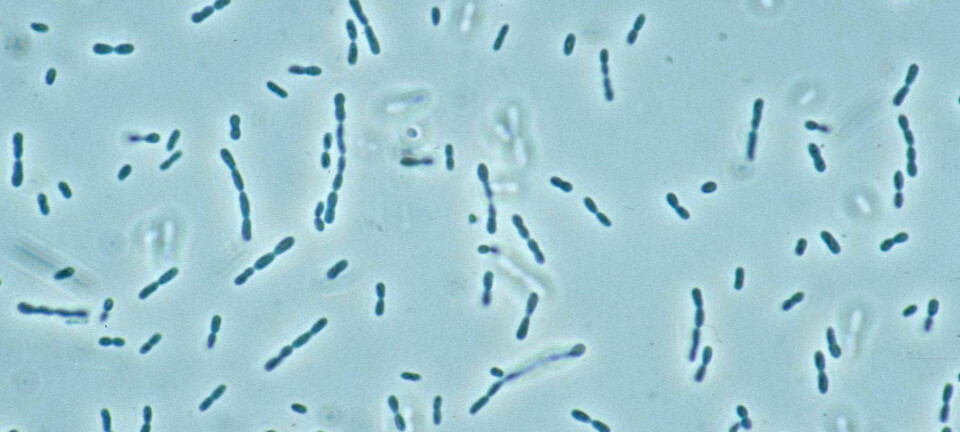
Aerosols are wild cards in climate models
Tiny airborne particles in the Earth’s atmosphere affect its climate. But uncertainties regarding their impact can be greater than reckoned in climate models, according to new Norwegian research.
Denne artikkelen er over ti år gammel og kan inneholde utdatert informasjon.
What has made our planet’s climate what it is today?
The answer involves a very complicated jigsaw puzzle with countless pieces, interacting for over a billion years: Greenhouse gases, solar radiation, cloud formation and a host of other factors. Aerosols are one of these contributors that play a part in the global climate balance – as well as very local air conditions.
Aerosols are tiny particles, at least partly consisting of solid matter, which waft into the atmosphere and can remain there for a long time. Some aerosols are completely natural, like the tiny droplets of water and salt from the foam and air bubbles on the ocean surface, or dust from the Sahara, soot from forest fires or specks of ash from volcanoes. Substances released by phytoplankton are another example.
But human activity produces aerosols too, which means that we have responsibility for them and need to know the consequences. Think about industrial pollution, for instance sulphates from coal-fired power plants, or soot caused by billions of people trying to stay warm or cooking their food. Not to mention all our air, ocean and road traffic.
Climate cooler

Most natural and man-made aerosols have a cooling effect on the climate, directly and indirectly. The particles scatter some of the Sun’s rays as well as dispersing terrestrial radiation. This scattering is called direct radiative “forcing” of the climate. Forcing is term used for factors which alter the Earth’s radiation balance. Aerosols also help form and change clouds, which reflect solar energy back into space – the tiny particles’ indirect type of climate forcing.
In this sense, aerosols have a cooling effect. They work against global warming and they need to be factored into climate change equations. They are especially important when trying to account for the sensitivity of the Earth to increased levels of climate gases in the atmosphere.
All the major scientific climate models do take the climate forcing contributions of aerosols into account.
As climate science develops the answers these models give have grown increasingly unanimous: They all predict nearly the same contribution from aerosols with only a small margin of uncertainty. The small degree of uncertainty means that empirical results should be close to any calculated expectations.
But there’s the rub. When scientists compare the figures from their models with what has been monitored in the atmosphere, something seems amiss.
Observations don’t match models
The observations of aerosols do demonstrate approximately the same mean values as predicted in computer models, but the range of answers is distributed more widely. The wider distribution indicates that aerosols could be cooling the climate either significantly more, or significantly less, than studies have suggested.
How come? Why don’t the models match the observations?
Norwegian scientists have now subjected 15 leading climate models to a closer examination. Bjørn Samset and Gunnar Myhre of the Center for International Climate and Environmental Research (Cicero) and Michael Schulz of the Norwegian Meteorological Institute have singled out the numbers used in the models and made their own calculations of the impact of aerosols.
Their results were unexpected.
“The uncertainty we get is much closer to what is obtained in observations than what’s predicted in the models,” says Samset.
How sensitive is our planet to CO2?
“Perhaps we’ve underestimated the uncertainty of our calculations regarding aerosols. If so, this will have consequences for our understanding of how sensitive the climate is for increases in greenhouse gases such as CO2,” asserts Samset.
“We know that the global mean temperature has risen 0.8°C since the 1700s. And we know how much the CO2 levels in the atmosphere have increased. If these factors were all we needed to consider, we could say fairly accurately how sensitive the climate is for raised in CO2.”
But we know that aerosols counteract the warming.
If they have only had a weak buffering effect in the past 150 years, it indicates that the Earth is not all that sensitive to increases in CO2.
On the other hand, if aerosols have had a strong cooling effect, the real impact of higher CO2 concentrations in the atmosphere has been even stronger. That would mean the Earth is more sensitive than feared to increases in climate gas levels.
Not a huge breakthrough
Samset says this sensitivity is certainly relevant for everyone who tries to predict how our planet will react to increasingly higher levels of climate gases.
“Earlier results of models have indicated that the Earth’s sensitivity is not very high. I still think that holds true. But the big uncertainty which emerged in our results means we cannot rule out that the planet is more highly sensitive to CO2.”
The researcher considers the new results to be an important contribution to climate considerations. But he warns that this is not a magnificent breakthrough. The models do not even have to be wrong.
“There could be additional effects which the models account for that were not factored into our calculations,” he explains.
“I rather hope so, as that would make the models correct. But in any case, it’s essential for us find out how big a role aerosols are actually playing.”
-------------
Read the Norwegian version of this article at forskning.no
Translated by: Glenn Ostling





































